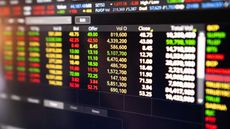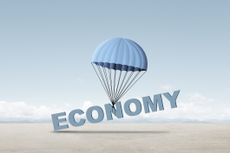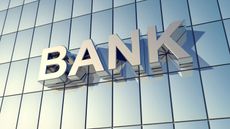Kiplinger Inflation Outlook: Inflation Eases for a Second Time This Year
A Federal Reserve interest rate cut is still unlikely before November, but July can’t be ruled out yet.

Kiplinger’s Economic Outlooks are written by the staff of our weekly Kiplinger Letter and are unavailable elsewhere. Click here for a free issue of The Kiplinger Letter or to subscribe for the latest trends and forecasts from our highly experienced Kiplinger Letter team.
Inflation eased again in May. Overall inflation edged down to 3.3% as energy prices dipped, and stepped down to 3.4% when you exclude food and energy prices. Inflation in services, a Federal Reserve focus, slowed to 0.2% in May (and 5.3% over the past 12 months), helped by a small decline in the cost of motor vehicle insurance. Those prices had risen 20.3% over the past 12 months. May marked the first time in 29 months that they have not increased. Medical care inflation also eased because of a smaller rise in hospital costs. Airfares declined along with the drop in fuel costs.
The one missing ingredient in the recipe for lower inflation is the hoped-for slowing of shelter cost rises since shelter is the largest single component of the Consumer Price Index. This category did not slow at all in May. Improvement in average rent increases has been expected for a while, given that smaller apartment rent increases have been seen in the market as leases come up for renewal, and it is something of a mystery as to when the CPI report will start to reflect those.

Sign up for Kiplinger’s Free E-Newsletters
Profit and prosper with the best of expert advice on investing, taxes, retirement, personal finance and more - straight to your e-mail.
Profit and prosper with the best of expert advice - straight to your e-mail.
Goods prices, aside from food and energy, were unchanged on average in May, and are down 1.7% over the past 12 months. Prices of new vehicles declined, though they rose for used vehicles. Nevertheless, used-car prices are on a downward trend, having dropped 9.3% over the past year. Prices of groceries were unchanged, the fourth consecutive month without an increase. They are now up only 1.0% from a year ago. Gasoline prices fell 3.6% following three months of noticeable increases.
May’s progress on inflation means there is a slim chance the Federal Reserve could cut interest rates at its July 31 meeting, but the odds still favor a first cut at its Nov. 7 meeting, after the election. The Fed is probably hoping that it will be able to cut in July, because then it could follow a pattern of cutting at every other meeting, which would avoid having to cut at its Sept. 18 meeting, during the height of the presidential campaign.
Annual inflation numbers for the rest of this year are not likely to dip much below the current rate of 3.3%. That is the result of the relatively soft inflation that took place in the second half of 2023, which will make year-over-year comparisons in the upcoming CPI reports seem like little progress is being made. But analysts will be focused on the monthly changes since these will point to whether inflation is slowing now. If those monthly improvements materialize this summer, then expect the annual inflation rate to show a significant move towards the Fed’s target of 2% to 2.5% in the early spring of 2025.
Related content

To continue reading this article
please register for free
This is different from signing in to your print subscription
Why am I seeing this? Find out more here
Get Kiplinger Today newsletter — free
Profit and prosper with the best of Kiplinger's advice on investing, taxes, retirement, personal finance and much more. Delivered daily. Enter your email in the box and click Sign Me Up.

David is both staff economist and reporter for The Kiplinger Letter, overseeing Kiplinger forecasts for the U.S. and world economies. Previously, he was senior principal economist in the Center for Forecasting and Modeling at IHS/GlobalInsight, and an economist in the Chief Economist's Office of the U.S. Department of Commerce. David has co-written weekly reports on economic conditions since 1992, and has forecasted GDP and its components since 1995, beating the Blue Chip Indicators forecasts two-thirds of the time. David is a Certified Business Economist as recognized by the National Association for Business Economics. He has two master's degrees and is ABD in economics from the University of North Carolina at Chapel Hill.
-
 Beryl Portends a Harsh Hurricane Season: Are You Ready?
Beryl Portends a Harsh Hurricane Season: Are You Ready?Hurricane Beryl is breaking records as the first hurricane of the season. Do you have the insurance you need?
By Erin Bendig Published
-
 Stock Market Today: Markets Set Fresh Highs as CPI, Earnings Loom
Stock Market Today: Markets Set Fresh Highs as CPI, Earnings LoomStocks wavered on light volume ahead of a busy week for economic news and corporate earnings.
By Dan Burrows Published
-
 Kiplinger Special: The Long-Term Future of the U.S. Economy
Kiplinger Special: The Long-Term Future of the U.S. EconomyThe Kiplinger Letter Kiplinger's report into what it will take the U.S. to maintain a healthy economic growth rate.
By David Payne Published
-
The Fight Against Cancer Enters a New Phase
The Kiplinger Letter Breakthrough treatments hold promise for patients and investors.
By Matthew Housiaux Published
-
After Decades of Promise, the Virtual Reality Era Has Finally Arrived
The Kiplinger Letter VR is a paradigm shift for consumer technology. The tech has a long road ahead, but amazing hardware already puts the huge potential on full display.
By John Miley Published
-
AI to Power the Next Generation of Robots
The Kiplinger Letter There's increasing buzz that the tech behind ChatGPT will make future industrial and humanoid robots far more capable.
By John Miley Published
-
The Robots Are Coming... But Not For a While
The Kiplinger Letter There’s excitement in the tech sector over the potential of humanoid robots, but widespread adoption is likely to be years away.
By John Miley Published
-
Farmers Face Another Tough Year As Costs Continue to Climb: The Kiplinger Letter
The Kiplinger Letter Farm income is expected to decline for a second year, while costs continue to up-end farm profitability.
By Matthew Housiaux Published
-
H-1B Work Visa Rules Get a Revamp
The Kiplinger Letter H-1B visas allow employers to hire high-skilled foreign workers. Regulators have finalized new rules for this visa program following last fall's proposal.
By Matthew Housiaux Published
-
Woes Continue for Banking Sector: The Kiplinger Letter
The Kiplinger Letter Regional bank stocks were hammered recently after news of New York Community Bank’s big fourth-quarter loss.
By Rodrigo Sermeño Published





